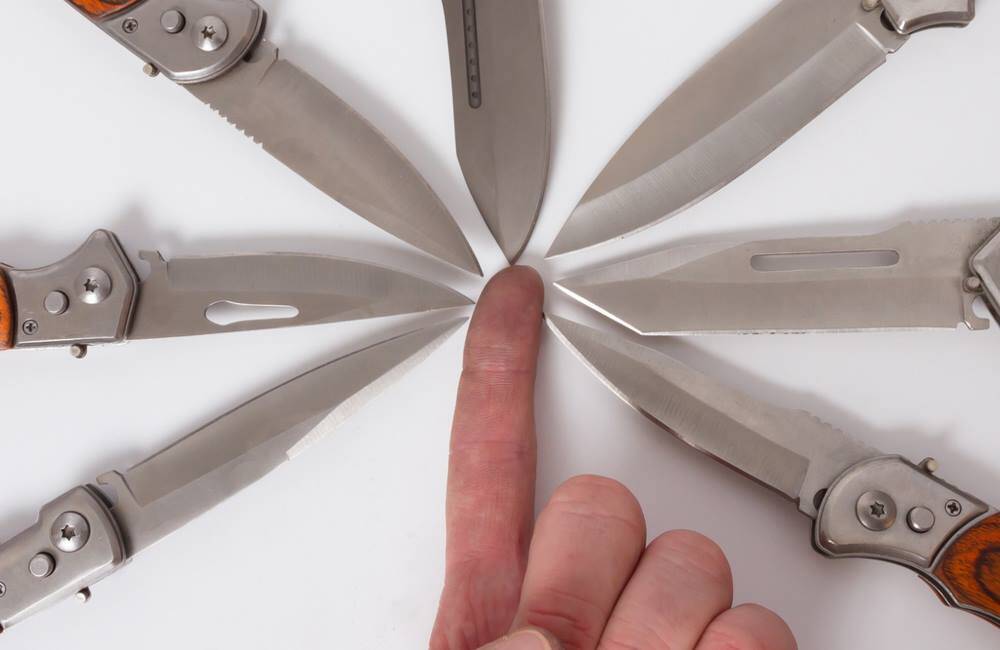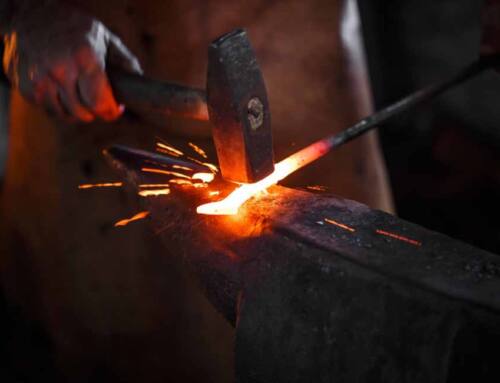For as long as humans have been in existence, there has been a need to cut. Over the millennia, knife grinds have emerged as we humans honed our knife making skills. Whether the need is to hack through the Amazon jungles or get a clean shave, the types of knife grinds used for these, and every task in between, vary greatly.
What are Knife Grinds
The term, knife grind, is always connected to and affects the final knife edge. It refers to the cross-section of the knife where the blade metal has been trimmed, by grinding away excess material to form the character of the blade. This is not to be confused with the blade profile, which refers to the shape of the cross-section from the blade’s spine down to the edge.
There are distinct types of grinds and, in general, certain types of knife grinds are considered preferable for particular tasks. It may take some experimentation, but after trying some grind varieties out, your preferences may become more apparent.
Not everyone likes the same grind for certain tasks, so the “best” grind can be relative to the individual.
While what follows is by no means the full extent of knife grinds, these are basic grinds. Most other grinds are a variation or combination of these basic grinds.
No Grind
Why would we include a no grind category in a knife grind post? Because there are tools out there in the knife world that have no edge, no tip and yet, are intricate to knife practices and practicality.
Many people like to train with knives but using a live blade to do so is not on the smart side of the Darwin scale. Training knives are cut into the shape of the live blade with the intention of training with or without a partner.
In the case of SNAG X Controller, there is no grind, however, it is not only a practice tool but also a compliance tool; a very effective tool in the field. Although you can train with it, SNAG X Controller is not a trainer.
KRUDO Knives offers trainer models in many of our folder and fixed blade designs.
Hollow Grind
This grind is usually associated with straight razors, however, there is a distinction that should be made in the case of razors in that they will begin with a hollow grind and end in a zero grind. This gives the ability to give a close shave that a hollow grind not ending in a zero grind may not give. With both sides of the blade curving in toward each other, the concave grind comes to a very sharp edge.
The hollow grind saw a surge of popularity in the 19th century. Hunters picked it up to use in field dressing and skinning because of the exceedingly sharp edge. Keeping this type of blade sharp is done by regular sharpening with a stone or leather strop. The hollow grind is not the edge you typically want to use to chop down a tree. The durability of the edge is not meant for harsh chopping tasks.
Some of the KRUDO Knives blades that incorporate the hollow grind are; RAW, REVOLUTE, SNAG, HAIKU, KHATCHET, MMF, KALIZ, KRONA FX, and TRYST.
FLEA DT is a single hollow grind.
Flat Grind
This is perhaps the oldest of all knife grinds and is one of the more difficult grinds to achieve. In a flat grind, both sides of the metal are ground consistently, gradually tapering from the spine to the edge, forming a long isosceles triangle. A lot of metal is removed from this grind giving it the advantage of a clean sharp edge. This is a grind that needs to be cared for. The thinness of the grind is not as durable as some of the other grinds, but the sharpness can be much greater.
This grind is most commonly seen in a blade intended to cut deeply, such as kitchen, chef’s knives.
Two of the KRUDO Knives blades that incorporate the flat grind are; STRICK9 and DAO Folders.
DISCIPLINE Folder has both hollow and flat grinds.
Sabre Grind
The sabre grind is related to the flat grind in that both sides of the metal are ground consistently, gradually tapering, but instead of starting at the spine, the bevel starts lower at about mid-way. This grind is made with heavy duty tasks in mind. It lends strength to the edge with some sacrifice its cutting ability. It can require more user strength to cut as it creates drag that a thinner grind will not have. Use this grind to cut through larger, more dense items. Military knives often incorporate the sabre grind as it is thicker and can stand up to hard use.
Convex Grind
If you’ve got an axe to grind, this is the grind for you! Historically, this was the grind that axes were made with. It leaves lots of metal behind the edge with an outward curve. This will allow for a good level of sharpness, but to maintain the same edge can be a challenge.
Like the hollow grind, the two edges curve to meet each other. However, rather than being concave, the edges taper along a rounded curve before meeting. This grind is also referred to as an ax grind. Many cleavers and butcher’s knives also use this grind.
Chisel Grind
With only one side to grind and no need for symmetry, this grind is considered an easier grind to achieve. For the same reasons, it is considered easier to maintain the edge. The angle can be sharpened to a thin, incredibly edge.
Like a chisel, this grind involves having only one side tapered or beveled with either a secondary edge bevel or no secondary edge bevel. The other side remains straight from spine to edge. A full chisel grind runs completely from spine to edge. Whether it is a full chisel or not, this design makes for easier sharpening and cleaning of the knife. The chisel grind is either right or left handed making it less versatile for some. Accuracy of the cut requires skill and takes practice to achieve it. Since there is a natural curve to any cut made with a chisel grind, it will tend to lean into the bevel side and create a slanted cut.
Many Japanese culinary knives, woodworking chisels and machetes are made with a chisel grind.
As long as we are in existence, we will need knives in our lives. Whether it is kitchen knives, hunting knives, camping knives, military knives, axes or machetes, we will always need to cut things. We cut food, chisel wood and stone, hack away at bushes that have over grown our yards, cut rope and boxes.
The type of blade grind and the job at hand will help determine the best blade for the job. Think about two things; what you want your knife to do for you combined with the amount of maintenance you are willing to give it. Once you have that clarity, you can then determine the best grind for you and for the job.







Cool!